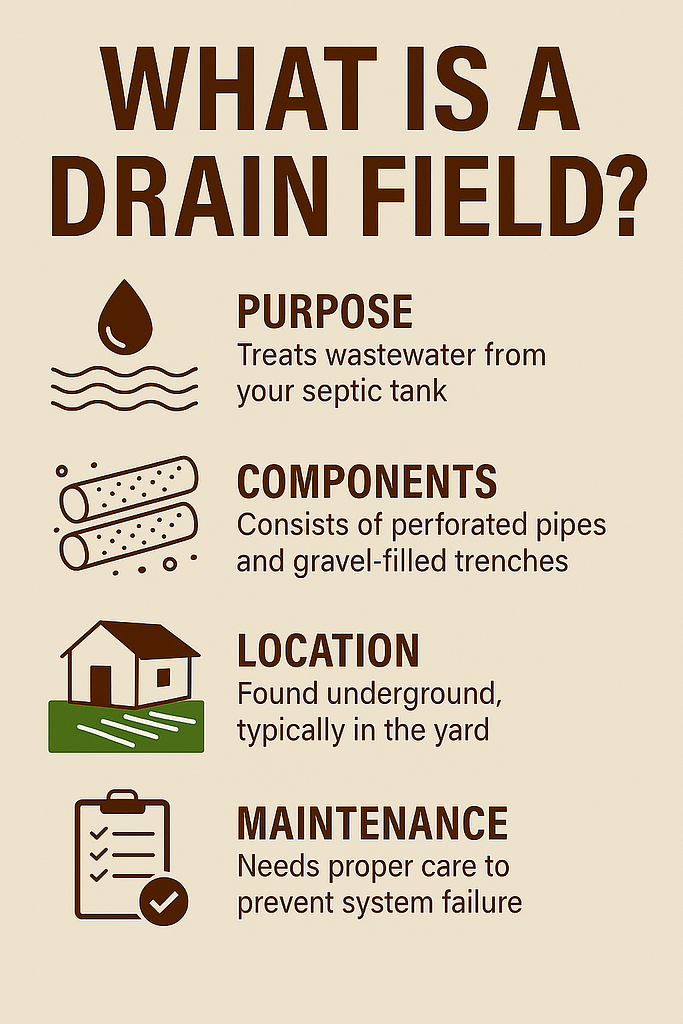
What Is a Drain Field? How It Works and Why It Matters
If you have a septic system, there’s more to it than just the tank. In fact, one of the most important (and most overlooked) parts is the drain field—also known as a leach field. It’s where all the treated wastewater goes after your tank does its job.
Understanding what a drain field is—and how to take care of it—can save you from costly repairs and a stinky yard.
What Is a Drain Field?
A drain field is a network of perforated pipes buried in gravel-filled trenches. Once your septic tank separates solids from liquids, the liquid wastewater (called effluent) flows into the drain field, where it’s filtered naturally through the soil.
This final stage removes harmful bacteria, viruses, and nutrients before the water re-enters the groundwater supply. In other words, it’s nature’s own water treatment system—right in your backyard.
How Does a Drain Field Work?
- Wastewater leaves your house and enters the septic tank.
- Solids settle to the bottom, and scum floats to the top.
- The remaining liquid flows out to the drain field.
- The liquid spreads through the pipes and percolates into the soil.
- Soil microbes help clean the water before it reaches the water table.
Simple, right? But when things go wrong, you’ll know it.

Signs of Drain Field Trouble
- Soggy or spongy areas in your yard — especially over the drain lines
- Unusually green grass in patches (effluent acts like fertilizer)
- Slow drains or gurgling sounds in your home
- Foul odors outside near the field
- Backups in toilets or tubs (usually means the entire system is struggling)
“We noticed this one patch of grass growing twice as fast as the rest—and sure enough, the drain field pipe was cracked. Wish we’d caught it sooner.” – Caleb S., North Carolina
How to Protect Your Drain Field
- Never park or drive over it — the weight can crush pipes and compact soil
- Don’t plant trees or deep-rooted shrubs nearby — roots can invade the pipes
- Divert roof drains and surface water away — excess water can flood the system
- Pump your septic tank regularly — prevents solids from reaching the field
- Watch your water usage — too much water too fast can overwhelm the field
In short, think of your drain field like a delicate sponge. You want to protect it from excess weight, roots, and water.
How Long Does a Drain Field Last?
With proper care, a drain field can last 20 to 30 years or more. But if it fails, it’s one of the most expensive parts to replace—often costing $5,000 to $15,000+.
That’s why a little prevention goes a long way.
Final Thoughts
Your septic tank may be the star of the show, but the drain field is the quiet hero working underground. Take care of it, and it’ll keep doing its job for decades—no drama, no odor, no mess.
Worried Your Drain Field Might Be Saturated?
Learn the signs your septic tank is full and when to call in a pro before it leads to a bigger issue.



